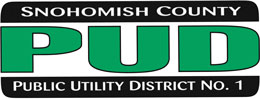In this new blog post series, we’ll examine some trouble zones in the home when it comes to wetness and moisture management. We’ll also provide some quick tips to help remedy these common moisture issues in the trouble areas discussed. If you have any severe problems or just need a hand figuring out the best approach to take in managing moisture in your home, call our team at BelRed today.
In our final home moisture and humidity blog post, we’re paying special attention to another target zone for these problems—the kitchen. The kitchen is obviously a place that can be very troublesome when it comes to keeping things dry. Exposed water can almost always be found in the kitchen. Whether it’s during meal preparation or otherwise, managing the moisture in your kitchen can help keep the relative humidity in your whole home down, keeping things clean, safe and comfortable. Here are some tips for kitchen moisture management to round out our series:
Tip 1 – Ventilate, ventilate, ventilate. Proper ventilation is absolutely crucial when it comes to humidity in the kitchen. Oven and stovetop cooking can greatly contribute to moisture in the air and condensation in the kitchen if things aren’t properly ventilated. Make sure your oven fan is working well and always use it during cooking, especially when boiling water. A good fan and hood vent will take the moisture from the cooking process and send it directly outside. If a vent or fan isn’t an option in your home, try to cook with a window open.
Tip 2 – Keep a lid on it. Similarly (and supplementary) to our first tip, try to keep things covered for as long as possible when cooking in pots and pans on the stovetop. A lid keeps moisture in and blocks it from providing a steady flow of wet steam out into the air.
Tip 3 – Ditch the carpet. It’s fairly uncommon to see carpet in kitchens today—and for good reason. If you do have carpet in the kitchen, perhaps it’s time to think about switching it out for a harder flooring choice like hardwood, laminate or tile. Carpet traps moisture and can lead to bigger moisture-related problems, such as mold. Plus, it’s much easier to clean other surfaces from the regular food and drink spills that happen in the kitchen. A win-win.
Tip 4 – Wipe down surfaces regularly. Water or other liquids that sit on the counter for too long can easily lead to the beginnings of mold and mildew issues in the kitchen. When you’re done using the space, clean and wipe down on wet surfaces. This will help ensure the kitchen is dry, clean, and comfortable.
Here are several tips from our experts on how to deal with basement moisture and other related problems.







